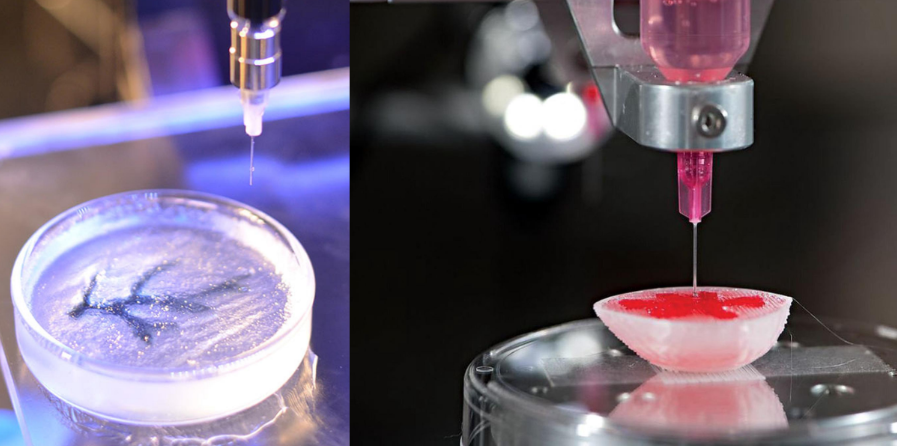Electronics & Semiconductor
Revolutionizing Industries With 3D Printing Advancements
In the era of advanced technology, 3D printing has been an innovative approach that is transforming different industries from manufacturing to healthcare and food. Widely known as addictive manufacturing, 3D printing is the process of producing three-dimensional objects with the help of a digital file by adding different resources layer by layer.
3D printing technology has gained significant attention in recent decades due to advancements in its hardware, software, and materials. This technology has recently been used for different activities such as custom manufacturing, prototyping, and creating diverse multifaceted designs Several industries have found the concept of 3D printing an opportunity to step into the digital world.
Use of 3D Printing Across Various Industries:
Manufacturing Industry:
The manufacturing industry is experiencing a transformation due to advancements in 3D printing technology. It is reshaping the traditional operations of production and has opened a new path for revolution. Due to its capability of rapid prototyping, engineers and designers can create the required patterns and tools with less time and cost. This has also helped in the fast iteration and modification of the product concept.
3D printing in manufacturing is a cost-effective alternative to traditional manufacturing processes as it generates minimal waste and has thus proven to be an advantage to the industry. It also enables companies to produce complicated and customized products as per the demands of the customers with ease.
Healthcare Sector:
3D printing has become an innovative aspect of the healthcare sector as it has opened new opportunities for personalized care. One of the key benefits of 3D printing is its cost-effectiveness and easy modifications. It can be used for making patient-specific implants and prosthetics, bioprinting for organ transplants, dental innovations, and orthopedic solutions and holds a promising future for the healthcare industry.
Aerospace Industry:
The aerospace industry is majorly known for pushing its boundaries in terms of innovation and revolution. 3D printing has been a powerful assistant for the industry. It has transformed the pattern in which the industry used to design, maintain, and manufacture aircraft and spacecraft. Advancements in the materials required for fuel efficiency and overall performance of the product are possible with the use of 3D printing. This technology has also reduced the assembling of complex parts for different pieces by consolidating these as a single design. Flexibility of supply chain and on-demand production has also been made possible with the help of this technology.
Automotive Sector:
With varied innovations and adoption of advanced technologies, the automotive industry is highly competitive. This has made it crucial for different players to undertake cutting-edge technologies and balance their efficiency/lean manufacturing, less production cost as well as sustainable and agile designing processes. 3D printing has evolved as a solution for all these concerns. With its unique characteristics such as iterations and rapid prototyping, improving performance, personalization and customization, tooling, and jig production, 3D printing is becoming a core of the automotive industry.
Architecture Sector:
The concept of 3D printing has become a crucial aspect of the architecture field over the recent years. The architectural model that serves as a physical representation and is crucial during the period of structure development can be prepared through 3D printing. This would help in selling a project, solving any issues concerned with the construction, and supporting the efforts of raising funds.
3D printing helps in knowing the material efficiency and sustainability in the construction process. Architects can create a complex and detailed scale model of the required designs with less time and cost. It can also them visualize the final product or outcome and communicate the idea to clients.
Consumer Goods Industry:
3D printing has opened new possibilities for the consumer goods market. Due to this, customers can curate the product as per their needs within less time. It helps in reducing the consumption of materials as well. 3D printing can also help in producing materials that are stable and light in weight and accelerate the development cycle and production.
Food and Beverages Sector:
The food and beverage industry has been rapidly expanding in recent years as companies are adopting novel tools and technologies to develop food and lower manufacturing prices. Through 3D printing, food companies can develop various types of food products. This process includes different activities such as layering edible filament to create different eatables that can be customized as per customer’s needs. 3D printing technology is widely used to customize food designs, digitalize and personalize nutrition, simplify the supply chain, and broaden the different sources of food materials available.
3D Printing Market Scenario:
The 3D printing market is evolving steadily. It was initially found to be a niche market with few features including prototyping. However, with the advancement in technology, its reach is increasing. Industries such as healthcare, food, aerospace, and others are utilizing this technology and expanding its applications.
The global 3D printing market size was USD 4,561.5 million in 2022 and is expected to register a robust revenue CAGR of 16.63% during the forecast period. Factors such as rapid advancements in 3D printing technology, growing demand for customized products, expanding applications of 3D printing, and rising investments in R&D activities are expected to drive global market growth during the forecast period.
However, lack of standardized testing methods for verifying the mechanical properties of 3D printing materials is expected to hamper the market’s growth to a certain extent during the forecast period. The process of 3D printing materials has not yet reached the efficiency as compared to traditional manufacturing materials. While creating a large object, the process of 3D printing is still slow. Also, the high cost of materials used in 3D printing limits the widespread adoption of the technology. To overcome these challenges, leading companies are heavily investing in developing novel technologies and enhanced solutions.




